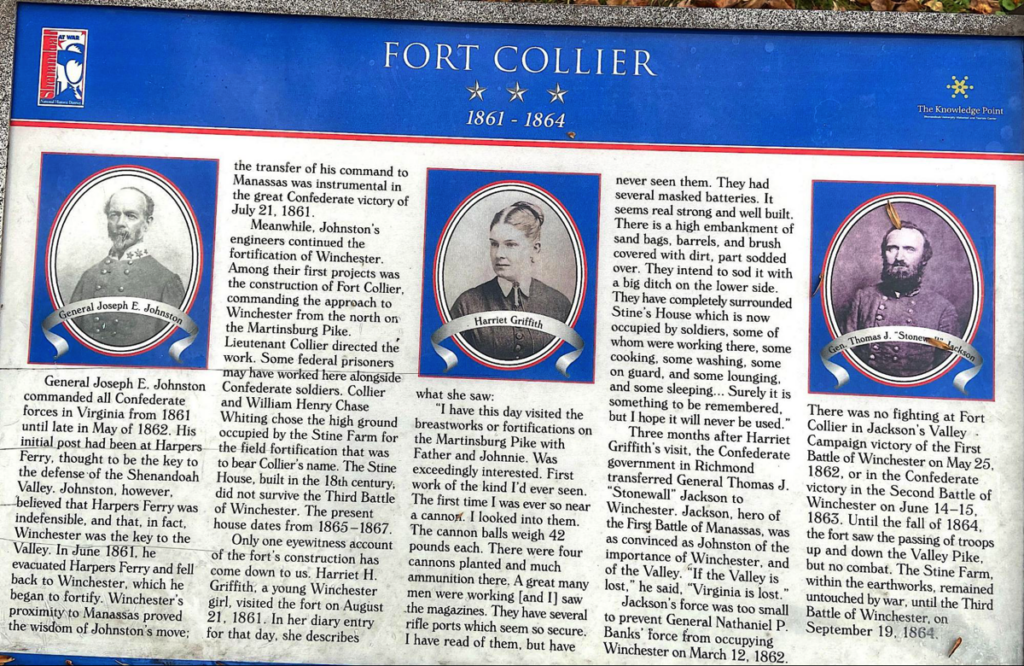Fort Collier & The Third Battle of Winchester
Once the excitement of Harriet Griffith’s visit to Fort Collier in the summer of 1861 subsided she confronted the sobering reality that Fort Collier ultimately had one purpose–a mechanism of war. Somewhat optimistically Griffith recorded in her diary on August 21: “Surely it is something to be remembered, but I hope it will never be used.” Griffith’s wish proved somewhat naive. Union and Confederate troops made use of Fort Collier at various points during the conflict, including on July 20, 1864, when Confederate General Stephen D. Ramseur, defeated several miles north of Winchester at the Battle of Rutherford’s Farm, withdrew his division into the earthwork fortification.
Two months later, on September 19, 1864, the moment Harriet Griffith hoped would never happen, occurred. Throughout that day as the Third Battle of Winchester raged east and north of Winchester, General Philip Sheridan’s Army of the Shenandoah pushed Confederate General Jubal Early’s Army of the Valley closer to Winchester. By late afternoon Early’s army line took the shape of an inverted “L.” As Sheridan surveyed the situation he sensed an opportunity to utilize his two cavalry divisions commanded by Generals Wesley Merritt and William Averell to launch an assault against that portion of Early’s army which faced north. As Confederate troops positioned around and inside Fort Collier peered north at five Union cavalry brigades, approximately 6,000 troopers, they simultaneously felt fear and awe. One Confederate wrote: “I never saw such a sight in my life as that of the tremendous force, the flying banners… and flashing sabers.”
Although Confederates in front of Fort Collier, including those commanded by General Fitzhugh Lee, and Confederate artillery from Captain George Chapman’s Battery inside the fort did all they could to slow the Union cavalry assault, all efforts proved futile. One New York cavalryman remarked simply that “with a savage yell we swept down upon the trembling wretches like a besom of destruction.”
Fort Collier's Last Moments
Explore More Fort Collier History
Interested in exploring more about Fort Collier and the Third Battle of Winchester?
Check out Jonathan A. Noyalas’ “Sabers, War, and Memory” on HistoryNet.









